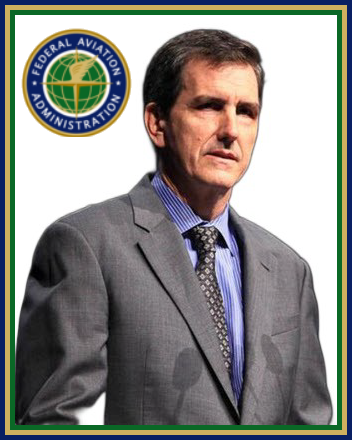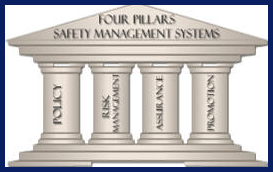David Shepardson, the presumptive dean of aviation safety journalists , has written about the FAA’s recent final rule mandating SAFETY MANAGEMENT SYSTEM be applied to “organizations that play a critical role in the design, manufacturing, and operation of aircraft (i.e., part 119 certificate holders operating under Part 135, Letter of Authorization (LOA) holders operating commercial air tours under § 91.147, and certain certificate holders under Part 21.”

The 160 page FAA promulgation of this globally recognized risk management tool recites its endorsement (if not insistent advocacy) by NTSB of requiring SMS programs for these three board categories of aviation entities authorized by the FAA under multiple regulations. The rule writers wax eloquently about the documented benefits of this regulatory regimen. True to the current thematic tone to its actions, the document recites the past few years of bad news in aviation.
Mr. Shepardson has great contacts in all sectors of the FAA regulatory domain. He notes that SMS as a concept has been “slow walked” by the FAA to the Part 121 carriers, aircraft manufacturers, airports, airports and now this set of aviation organizations. What he did not state explicitly is that this lack of alacrity to expanding the applicability of this discipline to these other equally relevant aviation entities is the UNWARRANTED REPUTATION THAT SMS IS A BURDEN. Implementation and management of the processes detracts staff time from their real work. WRONG:
- FIRST AND FOREMOST, our experience from implementing SMS, mandatory and voluntary, has been that the reduction of risk implemented under Part 5 has led to significant enhancement of safety which translates to avoidance of accidents, incidents, and losses. Well implemented regimes equal a top-of-mind safety conscious –that’s a better run airline.
- Second, those who complain about SMS have, more often, tried the DIY approach to designing and implementing their approach. The SMS rubric is general in its terms and leaves a lot to the imagination. While broad involvement in establishing this system (assuring real buy-in), involving someone who has experience with how to best design your specific parameters, to utilize techniques that have worked for your peers. Knowing what to focus on, where to start, how to assign policy drafting, what should be priorities and more SAVES TIME, IMPROVES RESULTS, and MINIMIZES UNNECESSARY CONFLICT.
Here is a quick recipe, based on our experience, that shows that the path need not be tortuous and can set into being a SAFETY CULTURE:
- Identifying the Accountable Executive and helping establish the person as a leader with the tools and authority to assure that Safety Culture is permanently in place.
- Developing a Safety Policy, assisting in developing the organization’s Safety Objectives, and initiating an organizational SMS Manual.
- Educating the permanent educators who will explain the rationale behind this safety disciple to everyone from the Board to each rung of management and including all without exception.
- Guiding the company’s representatives through the FAA review process. Past successes in this phase of implementation have identified points of regulatory emphases as well as techniques to facilitate approval.

Experienced SMS guides are available to establish an effective, efficient, and compliant program.
++++++++++++++++++++++
US FAA to mandate use of safety tool by charter airlines, manufacturers

April 22, 2024
WASHINGTON, April 22 (Reuters) – The Federal Aviation Administration (FAA) on Monday said it is finalizing new rules requiring CHARTER, COMMUTER, AIR TOUR OPERATORS, AND AIRCRAFT MANUFACTURERS to implement a key safety tool aimed at reducing accidents.
The FAA is adopting a final rule mandating the use of Safety Management Systems (SMS), which are a set of policies and procedures to proactively identify and address potential operational hazards, after first proposing to do so in January 2023. U.S. airlines have been required to have SMS since 2018 and some aerospace companies already voluntarily have SMS programs like Boeing (BA.N), opens new tab.
“Requiring more aviation organizations to implement a proactive approach to managing safety will prevent accidents and save lives,” FAA ADMINISTRATOR MIKE WHITAKER said.

CONGRESS IN 2020 directed the FAA to mandate SMS for aircraft manufacturers as part of a wide-ranging certification reform bill following two fatal Boeing 737 MAX crashes, but the FAA’s final rule goes beyond the requirements from lawmakers.
The issue of safety management has gotten new attention after a mid-air cabin panel blowout on a new Alaska Airlines Boeing 737 MAX 9 plane. The FAA barred Boeing from expanding 737 MAX production and ordered the planemaker to develop a comprehensive plan to address “systemic quality-control issues” within 90 days.
SMS systems require four key components – SAFETY POLICY, SAFETY RISK MANAGEMENT, SAFETY ASSURANCE, AND SAFETY PROMOTION. The FAA in 2023 required major airports to adopt SMS programs after more than 10 years of study, opens new tab.

…The National Transportation Safety Board has urged the FAA to require and verify the SMS systems in all revenue passenger-carrying aviation operations.
The NTSB said previously “too many operators either do not have one in place or have an ineffective one... It’s time more got on board. The risk to the flying public is too great not to.”
The NTSB has cited SMS systems in a number of incidents including the 2020 helicopter crash that killed NBA star Kobe Bryant, his daughter and seven others. The board cited the operator’s “incomplete implementation of its safety management system” and the benefits of a mandatory SMS in its report.
++++++++++++++++++++






